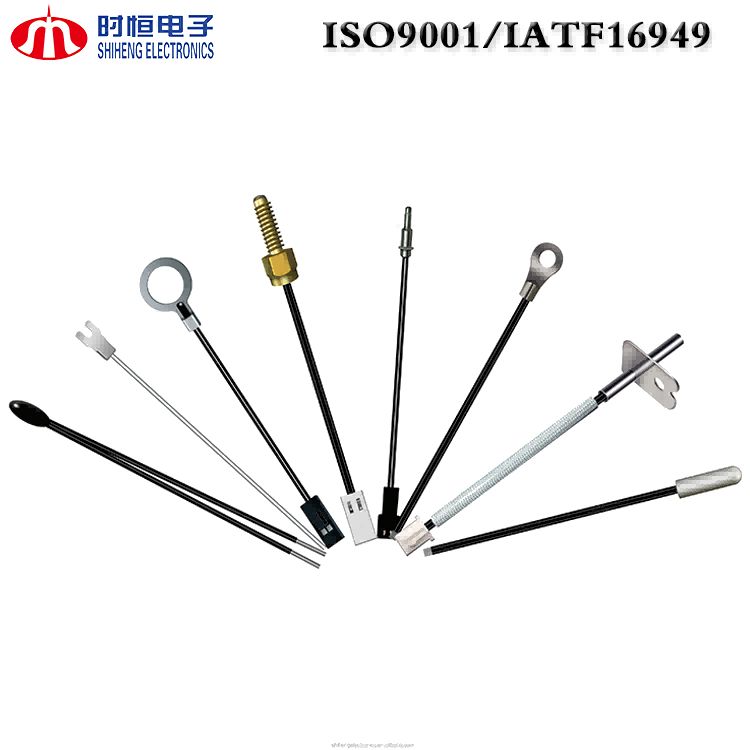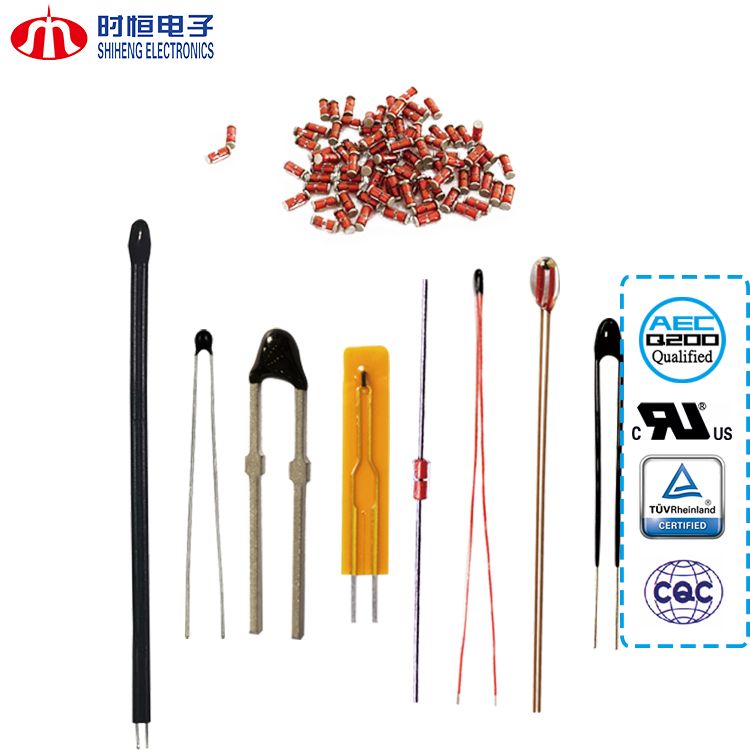Q&A
Feb 26, 2025
FAQ 1: How Does the Material Composition Affect NTC Thermistor Performance?
Q: What materials are used in NTC thermistors, and how do they impact performance?
A: Materials: NTC thermistors are typically made from metal oxides such as manganese, nickel, cobalt, and iron. These materials are doped to achieve specific resistance temperature characteristics.
Impact on Performance:
Sensitivity: Higher doping levels can increase sensitivity but may reduce stability.
Temperature Range: Different materials are optimized for specific temperature ranges (e.g., 40°C to +125°C for general use, or up to +300°C for high temperature applications).
Stability: High purity materials and advanced manufacturing processes improve long-term stability and reduce drift.
FAQ 2: What is the Role of Thermal Time Constant in NTC Thermistors?
Q: What is the thermal time constant, and why is it important in NTC thermistors?
A: Definition: The thermal time constant is the time required for a thermistor to reach 63.2% of the total temperature change when exposed to a step change in temperature.
Importance:
Response Speed: A lower time constant means faster response to temperature changes, which is critical in dynamic applications like automotive or industrial control systems.
Accuracy: Faster response improves the accuracy of realtime temperature monitoring.
Design Considerations: The time constant depends on the thermistor's size, material, and encapsulation. Smaller thermistors typically have lower time constants.

FAQ 3: How Do NTC Thermistors Handle Self Heating Effects?
Q: What is self-heating in NTC thermistors, and how can it be managed?
A: Self Heating: When current passes through an NTC thermistor, it generates heat due to its resistance. This can cause the thermistor to report a higher temperature than the actual ambient temperature.
Management Strategies:
Low Power Operation: Use low currents to minimize self-heating effects.
Heat Dissipation: Design the circuit to allow efficient heat dissipation, such as using heat sinks or optimizing PCB layout.
Calibration: Account for selfheating in the calibration process to ensure accurate temperature readings.
FAQ 4: What Are the Key Factors in Selecting an NTC Thermistor for Automotive Applications?
Q: What should I consider when choosing an NTC thermistor for automotive use?
A: Temperature Range: Ensure the thermistor can operate within the required range (e.g., 40°C to +150°C for most automotive applications).
Accuracy and Stability: High accuracy and longterm stability are critical for reliable performance in harsh environments.
Response Time: Fast response is essential for dynamic systems like engine temperature monitoring.
Certifications: Look for AECQ200 certification to ensure compliance with automotive industry standards.
Durability: The thermistor should withstand vibrations, humidity, and chemical exposure.
FAQ 5: How Do NTC Thermistors Compare to RTDs and Thermocouples?
Q: What are the advantages of NTC thermistors over RTDs and thermocouples?
A: Sensitivity: NTC thermistors are more sensitive to small temperature changes compared to RTDs and thermocouples.
Cost: NTC thermistors are generally more costeffective than RTDs and thermocouples.
Size: NTC thermistors are smaller and can be used in compact spaces where RTDs and thermocouples cannot fit.
Response Time: NTC thermistors typically have faster response times than RTDs.
Limitations: NTC thermistors have a narrower temperature range compared to RTDs and thermocouples, which can operate at much higher or lower temperatures.
FAQ 6: What Are the Challenges in Calibrating NTC Thermistors?
Q: What challenges arise when calibrating NTC thermistors, and how can they be addressed?
A: Nonlinearity: NTC thermistors have a nonlinear resistancetemperature relationship, making calibration complex.
Solution: Use lookup tables or mathematical models (e.g., SteinhartHart equation) to linearize the response.
SelfHeating: As mentioned earlier, selfheating can affect accuracy.
Solution: Calibrate under lowpower conditions or account for selfheating in the calibration process.
Drift: Over time, thermistors may experience drift due to material aging or environmental factors.
Solution: Use high-quality materials and perform periodic recalibration.

FAQ7: How Are NTC Thermistors Used in Medical Devices?
Q: What roles do NTC thermistors play in medical devices?
A: Temperature Monitoring: NTC thermistors are used in devices like thermometers, blood analyzers, and patient monitoring systems to measure body temperature or fluid temperatures.
Safety: They provide overheating protection in devices like MRI machines or dialysis equipment.
Accuracy: High precision is critical in medical applications, and NTC thermistors can achieve accuracies of ±0.1°C with proper calibration.
FAQ 8: What Are the Latest Advancements in NTC Thermistor Technology?
Q: What are some recent innovations in NTC thermistors?
A: Miniaturization: Smaller thermistors are being developed for use in wearable devices and IoT applications.
HighTemperature Materials: New materials are enabling NTC thermistors to operate at temperatures up to +300°C.
Improved Stability: Advances in material purity and manufacturing processes are reducing drift and improving longterm stability.
Integration: NTC thermistors are being integrated with digital interfaces for easier integration into smart systems.